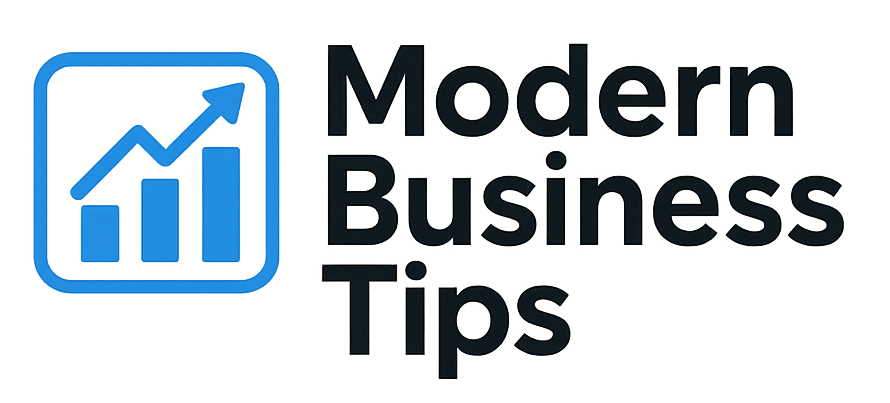Ecommerce, or electronic commerce, is about buying and selling online. But what exactly is an ecommerce store? It’s an online shop where customers can look at products, buy them, and get them delivered without needing a physical store. This digital storefront changes how we shop and lets businesses sell worldwide.
By 2023, ecommerce has grown a lot, with big sites like Amazon leading the way. The quick rise in online shopping shows how appealing and profitable starting an ecommerce business can be. If you’re thinking about getting into ecommerce, knowing what it is and its benefits can help you succeed.
Key Takeaways
- Ecommerce is the buying and selling of goods online.
- An ecommerce store eliminates the need for a physical location.
- It offers global accessibility and reach for businesses.
- 2023 has seen significant growth in online shopping.
- Understanding ecommerce trends can enhance business strategies.
Definition of an Ecommerce Store
An ecommerce store is a digital place where you can buy and sell things online. It’s like a virtual mall where you can shop from home. You can look around, compare prices, and pay for things easily.
Key Characteristics of Ecommerce
Ecommerce has some important features. These include:
- 24/7 Availability: You can shop at any time, unlike regular stores.
- Extensive Product Range: You can find lots of products from different categories without leaving your house.
- Variety of Payment Options: You can pay with many methods, like credit cards or digital wallets.
- User-Friendly Navigation: It’s easy to find what you need, making shopping online clear and simple.
Differences Between Ecommerce and Traditional Retail
It’s important to know how ecommerce and traditional retail differ. Key differences include:
| Feature | Ecommerce | Traditional Retail |
|---|---|---|
| Shopping Hours | Available 24/7 | Limited store hours |
| Physical Presence | Online only | Physical locations required |
| Marketing Strategies | Focus on digital marketing | In-store promotions and ads |
| Customer Experience | Personalized and digital | In-person interactions |
Types of Ecommerce Stores
Ecommerce covers many types of sites, each for different buyer-seller relationships. Knowing these categories helps in planning an online store. I’ll explain the main types: B2C, B2B, C2C, and C2B.
B2C (Business to Consumer)
B2C ecommerce is the most common model. Businesses sell directly to consumers. It includes retail, travel, and entertainment. Amazon is a great example, with lots of products and easy-to-use sites.
B2B (Business to Business)
B2B ecommerce deals with business-to-business transactions. It’s for bulk purchases or specialized services. Alibaba and ThomasNet are examples, helping businesses buy large quantities.
C2C (Consumer to Consumer)
C2C platforms let people buy and sell to each other. It’s like online marketplaces. eBay and Etsy show how well this model works, letting people sell unique or second-hand items.
C2B (Consumer to Business)
C2B ecommerce flips the traditional model. Consumers sell to businesses. Freelance sites like Upwork and Fiverr let people offer skills or goods to companies. This model promotes teamwork between consumers and businesses.
Benefits of Running an Ecommerce Store
Running an ecommerce store offers more than just selling online. It brings many benefits that help increase profits and offer unique advantages. Knowing these can help decide if ecommerce is right for you.
Global Reach and Accessibility
Ecommerce lets me sell to people all over the world. This means I can serve different markets and meet various needs. It’s easy for customers to shop from anywhere, anytime, which boosts sales.
Lower Operating Costs
Ecommerce costs less than traditional stores. I save on rent, utilities, and staff. This lets me spend more on marketing, improving products, and serving customers better.
Flexibility and Convenience
Ecommerce lets me quickly change what I sell and how I market. I can start campaigns fast to meet customer needs. It’s also great for customers, who can shop anytime, anywhere.
| Benefit | Description |
|---|---|
| Global Reach | Access customers worldwide without geographical restrictions |
| Lower Costs | Reduced expenses on physical space, utilities, and staff |
| Flexibility | Ability to adjust offerings and strategies quickly |
| Convenience | 24/7 access for customers to shop anytime, anywhere |
Popular Ecommerce Platforms
Exploring ecommerce means looking at different platforms that fit business needs. A detailed ecommerce platforms review shows Shopify, WooCommerce, and BigCommerce as top choices. Each offers special features for different selling styles and audiences.
Shopify Overview
Shopify is a popular choice for its easy-to-use interface and wide app selection. It lets entrepreneurs start online stores quickly with templates and payment options. This makes Shopify great for small to medium businesses that want a simple setup.
WooCommerce Insights
WooCommerce is a WordPress plugin that offers customization. It’s known for adding ecommerce features to websites, giving a personalized experience. Users get many themes and plugins to grow their online space easily.
BigCommerce Features
BigCommerce is perfect for big businesses and enterprises because it scales well. It has advanced SEO and customizable checkout options. BigCommerce helps merchants grow by handling high traffic and improving sales.
Setting Up an Ecommerce Store
Starting a successful ecommerce store takes careful planning. It begins with picking a niche and ends with designing your online shop. Each step is vital for a great online business. Here’s how I set up my ecommerce store.
Choosing Your Niche and Products
Finding the right niche is key for success and happiness. I look at market trends, what customers want, and who my competitors are. A good niche can make all the difference in the ecommerce world.
Selecting the Right Platform
After picking my niche, I choose the best ecommerce platform. This choice affects how I handle transactions and the shopping experience. Platforms like Shopify, WooCommerce, and BigCommerce have different features. I pick based on what I need for my store.
Designing Your Storefront
The design of my store is its digital face. Good design makes it look great and easy to use. I focus on clear navigation, beautiful visuals, and layouts that keep shoppers engaged. Every part must work together for a smooth shopping experience.
| Step | Description |
|---|---|
| Niche Selection | Identifying a specific market segment and the products that cater to it. |
| Platform Selection | Choosing an ecommerce platform that aligns with business needs and offers essential features. |
| Storefront Design | Creating an appealing and user-friendly online shopping experience through strategic design. |
Payment Methods for Ecommerce Stores
In the world of ecommerce, it’s key to offer many payment options. Each method aims to make transactions smooth and safe. This makes shopping better for everyone. Let’s look at some common ecommerce payment options.
Credit and Debit Card Payments
Credit and debit cards are a big part of online shopping. Brands like Visa, MasterCard, and American Express are well-known. They let customers pay directly from their bank accounts.
Payment processors keep these transactions safe. They use encryption and fraud tools to protect your info.
Digital Wallets and Mobile Payments
Digital wallets like PayPal, Apple Pay, and Google Pay are gaining fans. They make paying easy and fast, without needing to enter card details every time. Adding these options makes shopping smoother and encourages more people to buy.
Buy Now, Pay Later Options
Buy Now, Pay Later (BNPL) is changing online shopping. It lets customers buy now and pay later in installments. This makes shopping more affordable and can keep customers coming back.
| Payment Method | Pros | Cons |
|---|---|---|
| Credit/Debit Cards | Widely accepted, familiar to users | Potential for fraud, requires secure handling |
| Digital Wallets | Convenience, quicker checkouts | May not be accepted everywhere |
| Buy Now, Pay Later | Increased affordability, promotes purchases | Can lead to customer debt if mismanaged |
Marketing Strategies for Ecommerce
Effective marketing strategies are key for ecommerce success. Mixing different marketing techniques boosts visibility and engages customers. Using various online strategies can greatly improve your brand’s presence and sales.
Search Engine Optimization (SEO)
SEO is a vital part of digital marketing for ecommerce. By optimizing product details and images with the right keywords, businesses can rank higher in search results. This leads to more visitors and better sales.
Social Media Marketing
Social media platforms like Instagram and Facebook are great for reaching customers. Using targeted ads and engaging posts can build a loyal fan base. Sharing user content and stories can also boost sales and interaction.
Email Marketing Campaigns
Email marketing is essential for direct customer communication. Personalized emails with special offers or recommendations can encourage repeat buys and build lasting relationships. Regular emails keep customers informed and engaged.
| Marketing Strategy | Description | Key Benefits |
|---|---|---|
| SEO | Optimizing website content to rank higher in search results | Increased visibility, organic traffic |
| Social Media Marketing | Utilizing social platforms for promotional activities | Higher engagement, brand loyalty |
| Email Marketing | Sending targeted emails to customers | Direct communication, increased sales |
Customer Experience in Ecommerce
A great customer experience is key to keeping shoppers coming back. Making sure your online store is easy to use is a big part of this. It’s not just about how it looks, but how it works too.
Importance of User-Friendly Design
A design that’s easy to use is very important. Things like simple navigation, quick loading, and being easy to use on phones help a lot. A site that’s easy to get around keeps people interested and more likely to buy.
Making your site look good is important, but it can’t be at the expense of being easy to use. A good balance makes for a better shopping experience.
Customer Support Best Practices
Good customer support is a big plus. Having different ways to get help, like live chat and FAQs, helps solve problems fast. This builds trust and makes your service stand out.
Helping customers quickly shows you care about their satisfaction. This can make them more loyal to your store.
Personalization Techniques
Using personal touches can make shopping more enjoyable. Showing customers products they might like based on what they’ve looked at before is a good start. It makes them feel special and can lead to more sales.
Using data to understand what customers like helps create a shopping experience that feels just right for them. This can make them more likely to come back.
| Aspect | Impact on Customer Experience | Example |
|---|---|---|
| User-Friendly Design | Enhances navigation and reduces bounce rates | Easy to browse categories |
| Customer Support | Increases trust and satisfaction | Live chat availability |
| Personalization | Improves engagement and conversion rates | Recommended products based on browsing history |
Security and Compliance for Ecommerce
Exploring ecommerce, I see that security and compliance are key. With more online sales, strong security is vital. It protects customer data and keeps businesses safe.
Without the right steps, risks can grow. This affects both business owners and shoppers.
Importance of HTTPS and SSL
HTTPS and SSL are now must-haves for ecommerce sites. They encrypt data between buyers and sellers. This makes online shopping safer.
It also builds trust with customers. They’re more likely to share payment info on secure sites.
Data Protection Regulations (like GDPR)
Following data protection laws, like GDPR, is critical. It keeps customer trust high. Handling personal info right protects my business and keeps customers happy.
Being open about data use and giving users control helps too. It strengthens customer relationships.
Best Practices for Secure Transactions
For top security, follow best practices. Keep software updated, use trusted payment gateways, and check for security issues often. These steps reduce data breach risks and boost customer trust.
Strong security lets customers shop without worry. They know their transactions are safe.
If you’re starting an ecommerce business, check out this resource on ecommerce basics. Knowing these basics helps in setting up good security.
Challenges Faced by Ecommerce Stores
Running an ecommerce store is tough. The online market is very competitive. Stores must tackle challenges like managing stock and shipping issues to succeed.
Competition and Market Saturation
The competition in online markets is huge. With so many brands, it’s hard to stand out. To grab attention, stores need to be creative and offer something unique.
Knowing what customers want is key. Great customer service can also set a store apart. This builds loyalty and gives it an edge over rivals.
Managing Inventory Effectively
Managing stock well is essential for profit. Too much stock means high costs and waste. Running out can lose sales and upset customers.
Using data to track stock helps make better choices. This way, stores can restock on time. Technology makes managing inventory easier and safer.
Dealing with Shipping and Fulfillment
Shipping and fulfillment are big challenges. Delays, high costs, and order mistakes can upset customers. Working with trusted logistics and planning shipping helps.
Being clear about shipping and giving options can improve the shopping experience. This addresses concerns and keeps customers happy.
Future Trends in Ecommerce
The world of ecommerce is always changing. This is because of new things that people want and new tech. Three big things are happening: more people are shopping on their phones, AI is changing how we shop, and we want to shop in a way that’s good for the planet.
Rise of Mobile Commerce
More and more people are buying things online using their phones and tablets. Websites and apps need to be easy to use on these devices. This makes shopping online better and can help businesses sell more.
Integration of AI and Machine Learning
AI is making a big difference in ecommerce. It helps make shopping more personal by suggesting things you might like. It also helps with keeping track of stock and predicting what people will want. This makes businesses run better and meet customer needs.
Sustainability in Ecommerce
People today care a lot about the planet. They want to shop in ways that are good for the environment. Companies that focus on being green are seen as better brands. They can use less packaging, buy materials that are better for the planet, and sell products that are good for the environment.
Conclusion: The Future of Ecommerce Stores
The world of ecommerce is always changing, full of new chances for growth and creativity. Understanding ecommerce helps entrepreneurs tackle the online market’s challenges. There are many ways to start an online store, thanks to ecommerce’s wide range of opportunities.
Marketing, security, and customer service are key for success in ecommerce. To make the most of ecommerce, you need to keep learning and adapting. This ensures you meet customer needs and build a lasting online business.
Ecommerce offers great chances for making money and serving customers well. I urge people to look into ecommerce as a business option. By diving into this digital world, you can make your ecommerce dreams come true.



